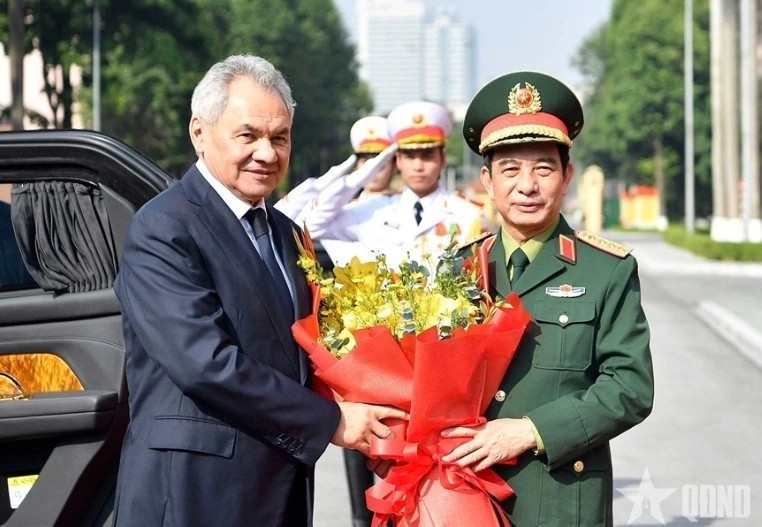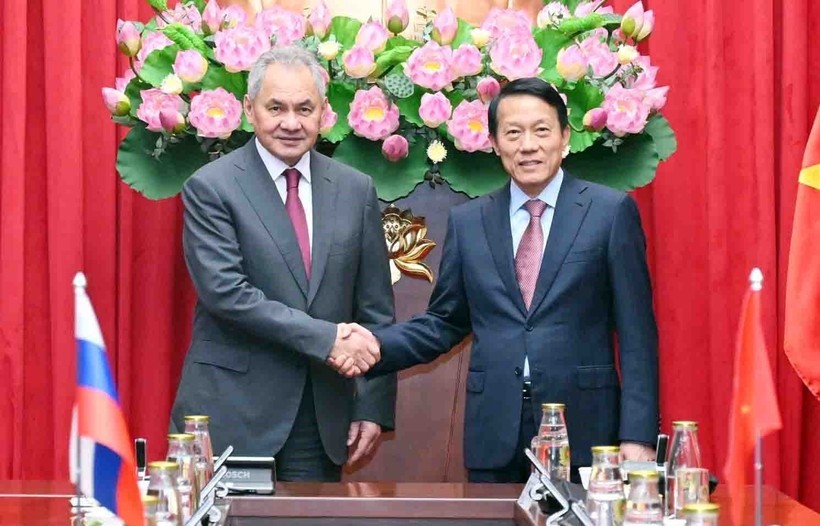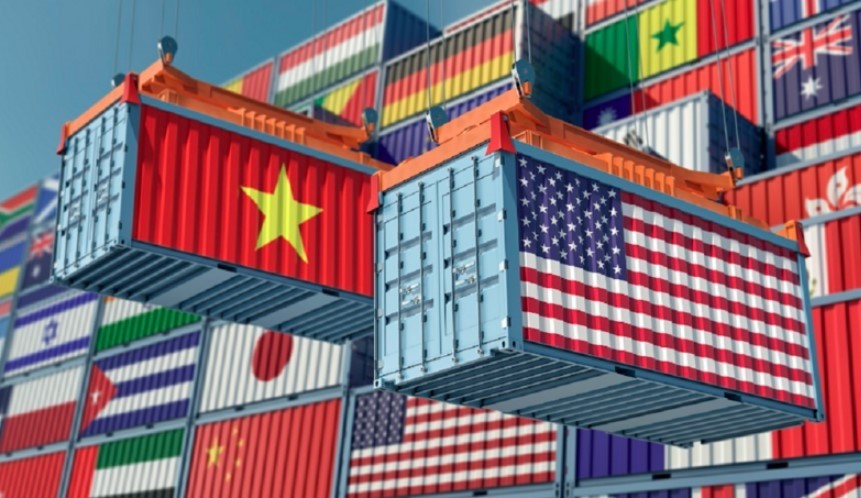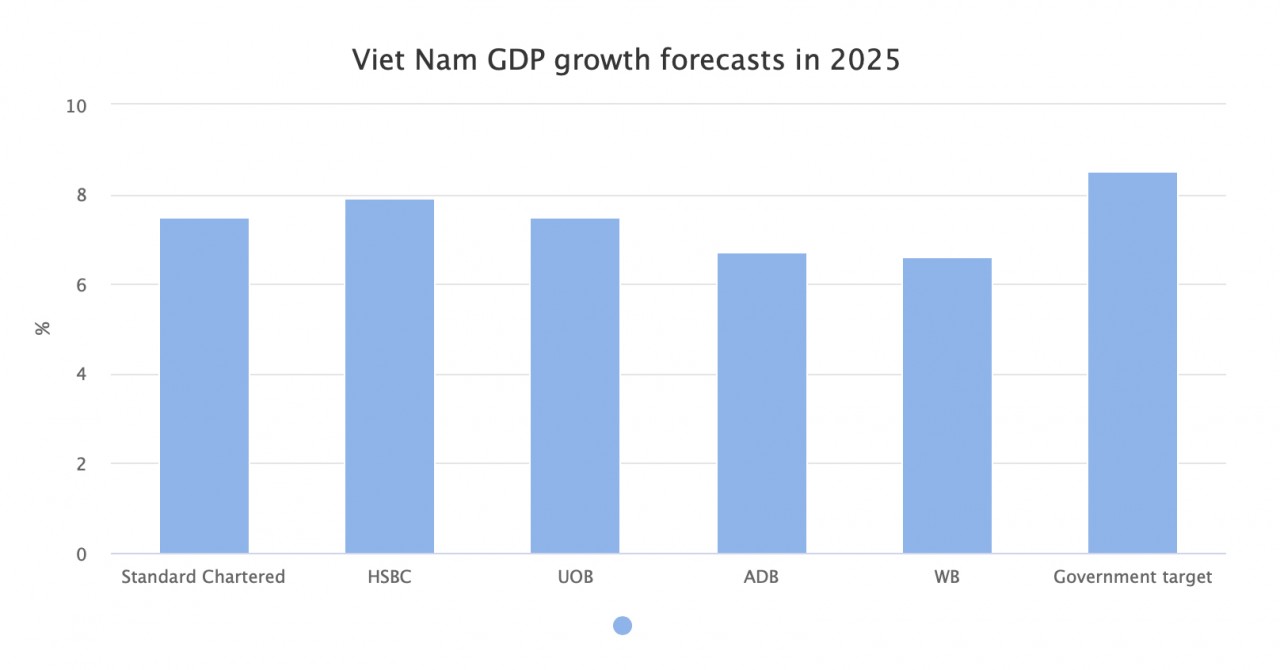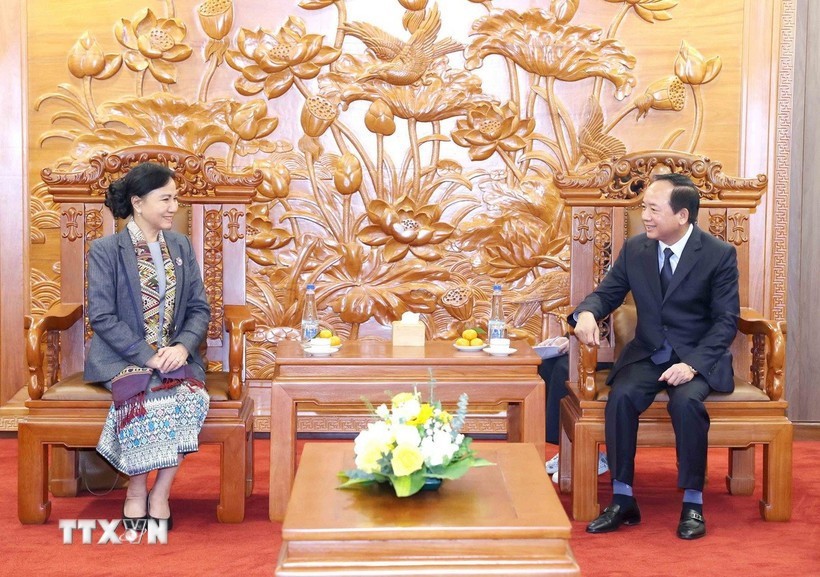Vietnam calls for stronger connectivity and resilience at APEC Economic Leaders’ Meeting
President Luong Cuong has highlighted the need to enhance connectivity and resilience among APEC economies, calling for measures to streamline supply chains, promote regional trade and investment, and support the private sector, particularly small and medium-sized enterprises, to foster inclusive and sustainable growth.
President Luong Cuong attended and delivered remarks at the first session of the 2025 APEC Economic Leaders’ Meeting on the morning of October 31 (local time), at the Gyeongju Hwabaek International Convention Center (HICO) in the Republic of Korea, following a formal welcome ceremony for APEC leaders.
The session gathered leaders and heads of delegation from the 21 member economies, along with special guests including the Crown Prince of Abu Dhabi (United Arab Emirates) and the Managing Director of the International Monetary Fund (IMF).
Under the theme “Building a Sustainable Tomorrow: Connect, Innovate, Prosper”, the session focused on two main areas: promoting trade and investment amid global uncertainty, and strengthening public-private cooperation to unlock private-sector potential for inclusive and sustainable growth, according to VOV.
 |
| President Luong Cuong and leaders of APEC economies at the 32nd APEC Economic Leaders’ Meeting (Photo: VNA) |
In his opening remarks, President of the RoK Lee Jae Myung emphasized that this meeting provides an opportunity for leaders to engage in open and constructive dialogue, aiming to enhance trade and investment, strengthen mutual understanding, and jointly advance the development and shared prosperity of the region.
The IMF Managing Director briefed leaders on the global outlook, urging APEC economies to focus on four priorities: ensuring public financial sustainability, particularly public debt; maintaining financial stability and addressing macroeconomic imbalances; fostering a transparent business environment to support private-sector development; and stepping up regional cooperation to tackle disparities among economies.
The meeting featured in-depth discussions on initiatives and solutions to enhance the resilience of member economies and promote international economic connectivity in response to shared global challenges. Leaders agreed on the need to leverage the private sector’s role and potential, generate employment, improve livelihoods, and enhance coordination of fiscal and monetary policies to adapt to global economic fluctuations.
Expanding dialogue and public-private cooperation is a crucial and effective tool for mobilizing resources toward common development goals, including promoting green investment, developing sustainable infrastructure, advancing digital trade, and enhancing the competitiveness of small and medium-sized enterprises.
APEC leaders and invited guests also emphasized the importance of inter-regional economic integration and connectivity, calling for strengthened experience sharing and policy dialogue among regions, facilitating trade and investment, and building safe, flexible, and sustainable supply chains.
Speaking at the meeting, President Luong Cuong underlined the urgent need to enhance connectivity and resilience among APEC economies, particularly developing economies, in the face of external shocks and the mixed impacts of technology.
He proposed three key priorities for APEC. First, the forum should address major bottlenecks in regional supply chains and infrastructure by digitizing customs procedures efficiently, upgrading and harmonizing transport, logistics, and information technology infrastructure, standardizing cross-border data and payment regulations, and narrowing technological gaps among economies.
Second, APEC should promote trade and investment cooperation by implementing the Asia-Pacific Free Trade Agreement and multilateral agreements under the World Trade Organization, such as the Trade Facilitation Agreement, and by reducing non-tariff barriers. Third, support should be provided to the private sector, especially small and medium-sized enterprises, to improve access to capital, technology, and markets, and to increase management capacity to adapt and thrive in the digital era.
The President emphasized that amid macroeconomic instability, a solid microeconomic foundation is key for long-term growth, and the region’s development lessons have also underscored the crucial role of the private sector.
He affirmed that, as host of APEC 2027, Vietnam will work closely with both APEC and non-APEC economies to strengthen economic integration, promote green growth, and create a conducive environment for cooperation and development, aiming for a peaceful, stable, and prosperous Asia-Pacific region.
Vietnam, U.S. promote cooperation in war legacy remediation
The Vietnamese Ministry of National Defense, the U.S. Department of War, and the U.S. Department of State signed a memorandum of understanding (MoU) to enhance cooperation in war legacy remediation in Hanoi on October 31.
The MoU follows commitments made in the 2023 Joint Statement on upgrading Vietnam–U.S. relations to a Comprehensive Strategic Partnership; the 2024 Joint Vision Statement on Defense Cooperation; and the 2011 defense cooperation MoU, which was updated in 2022.
Under the latest MoU, Vietnam and the U.S. pledge to continue cooperation in clearing unexploded ordnance, improving the quality of life for people with disabilities in areas heavily affected by Agent Orange, cleaning up dioxin at Bien Hoa Airbase, supporting the search, recovery, and identification of Vietnamese martyrs' remains, and maintaining comprehensive cooperation in the search for U.S. service members missing in action in Vietnam.
Both sides also agreed to promote experience sharing, training, scientific research, technology application, as well as organize conferences, workshops, and communication programs to enhance the effectiveness of cooperation in this humanitarian field, VGP reported.
 |
| The signing ceremony of the MoU on to enhance cooperation in war legacy remediation, Ha Noi, October 31, 2025. Photo: VNA |
Deputy Minister of National Defense Hoang Xuan Chien said the MoU materializes the shared understanding of both nations' leaders, representing an important milestone in Vietnam–U.S. defense cooperation.
He affirmed that the two countries remain strongly committed to expanding cooperation in addressing war consequences.
Hoang added that the MoU signing takes place at a special time — as the two countries celebrate 30 years of normalization of diplomatic relations and ahead of the official visit to Vietnam by the U.S. Secretary of War, scheduled for early next month.
In recent years, Vietnam and the U.S. have closely coordinated and achieved significant outcomes in war legacy remediation, including dioxin cleanup at Da Nang and Bien Hoa airbases; improving the quality of life for Agent Orange victims in six heavily sprayed provinces; and returning the remains of U.S. soldiers missing in action during the war.
U.S. Ambassador Marc Knapper applauded the commitments, regarding them as a solid foundation for bilateral relations in the new phase. He emphasized that 2025 marks a special milestone — the 30th anniversary of normalized diplomatic ties — providing an opportunity for both sides to reflect on past achievements and strengthen humanitarian cooperation.
"This is a chance to reaffirm our shared spirit of cooperation in addressing war legacies and our determination to accomplish this important mission together in the coming time," the Ambassador said.
Vietnam shines as Asia’s growth bright spot amid global economic volatility
The Hong Kong-Shanghai Banking Corporation (HSBC) and Standard Chartered, in their reports released late October, raised the GDP growth forecasts for Vietnam to 7.9% and 7.5%, respectively, nearly 2 percentage points higher than their previous projections.
Similarly, earlier this month, the International Monetary Fund (IMF), the World Bank (WB), and the Asian Development Bank (ADB) also revised Vietnam’s growth forecasts upward, describing the country as a “rare bright spot” maintaining stable recovery amid global economic uncertainties.
This is reflected in Vietnam’s GDP growth in the third quarter, which reached 8.23% – the highest level since 2011. The figure not only demonstrates the economy’s strong momentum but also underscores Vietnam’s remarkable resilience amid consecutive challenges to global supply chains and rising protectionism.
Standard Chartered attributes Vietnam’s sustained growth to three main drivers – steady trade, resilient foreign direct investment (FDI) inflows, and a strong rebound in domestic demand
In terms of trade, Vietnam’s total foreign trade in the first nine months of 2025 exceeded 680 billion USD, up nearly 20% year-on-year. In September alone, the exports reached 42.7 billion USD, surging by 24.7% despite the US imposing a 20% tariff on most Vietnamese imports. Exports to the US still grew 38%, driven by product diversification and rising competitiveness of Vietnamese enterprises.
This shows that Vietnam has not only withstood the impacts of global trade policies but also proactively tapped opportunities to reposition itself within international supply chains, becoming a key link in the “China Plus One” strategy of many multinational corporations, VNA reported.
 |
| Handling import, export goods at Gemalink International Port in HCM City. (Photo: VNA) |
FDI attraction also remains a bright spot for the economy. By September 2025, the disbursed FDI value hit 18.8 billion USD – the highest in the past five years, while the newly registered capital totalled 28.5 billion USD, up 15.2% year-on-year.
A notable highlight is the clear shift in investment structure. In addition to traditional inflows from the Republic of Korea (RoK), Singapore, and Japan, the US and mainland China are emerging as two new sources of investment, focusing on hi-tech production, renewable energy, and industrial infrastructure.
According to HSBC, Vietnam is becoming a strategic choice in the global value chain restructuring process thanks to its stable macroeconomic environment, a flexible fiscal policy, and rapidly improving industrial infrastructure.
Domestic growth drivers also reflect strong recovery. Retail sales in the third quarter rose 12%, while inflation was controlled at 3.38%, below the government’s 4.5% ceiling target. The tourism sector witnessed a robust rebound, welcoming 15 million international visitors in the first nine months – equivalent to 120% of the pre-pandemic level in 2019.
Notably, the stable monetary policy continues to support businesses. Standard Chartered forecasts that the refinancing rate will be maintained at 4.5% during 2025–2026, supporting adequate liquidity while balancing growth with inflation control.
However, the IMF warns that the US’s tariff policy could drag Vietnam’s GDP growth down by 0.5–0.7 percentage points in the last quarter of 2025 unless offset by public investment and domestic consumption. Domestic challenges, including rising household debt, restrained consumer spending, and a sluggish real estate recovery, may also exert short-term pressures.
However, analysts remain optimistic, seeing these challenges as a necessary test of the economic governance of Vietnam—an economy that has proven its ability to withstand major shocks, from the 2008 global financial crisis to the COVID-19 pandemic.
According to the WB, Vietnam currently benefits from healthy fiscal space, supported by low public debt and macroeconomic stability, which enables large-scale public investment to address infrastructure bottlenecks, generate employment, and spur private sector investment.
Meanwhile, the ADB said Vietnam should continue focusing on three key pillars—sustainable FDI, domestic consumption, and efficient public investment—while speeding up digital transformation and green energy transition. This approach is viewed as a strategic path to maintain high growth and ensure long-term development quality.
With GDP growth surpassing 8% in the third quarter and optimistic projections from HSBC (7.9%) and Standard Chartered (7.5%), the full-year target of 8.5%, previously deemed “ambitious”, now appears increasingly achievable.
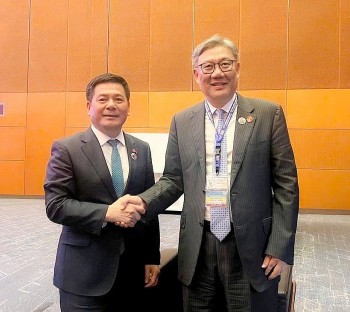 | Vietnam News Today (Oct. 28): Vietnam, China Strengthen Bilateral Trade Cooperation Vietnam News Today (Oct. 28): Vietnam attaches great importance to developing relations with Russia and Australia; Vietnam, Uzbekistan deepen parliamentary and bilateral ties; Vietnam, China ... |
 | Vietnam News Today (Oct. 29): Vietnamese Peacekeepers Restore Bridge, Bring Joy to African Villagers Vietnam News Today (Oct. 29): Vietnamese, Singaporean Government leaders hold second annual meeting; Party chief’s visit expected to shape new vision in Vietnam-UK trade relations; ... |







